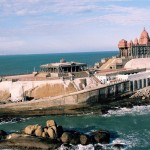History of Idukki
During the British period, Eravikulam and Rajamalai were owned by the North Travancore Land Planting Society. This particular region was later taken over by the Kannan Deven Hill Produce Corporation. This region was marked as exclusive private hunting area by the Corporation. According to certain research conducted by the British in this region, it was found that this hilly area is suitable foe tea plantation. Way back in 1936, the Rajamalai region was declared as wildlife sanctuary by the British Raj. It is to be noted that the existing Sanctuary was founded in 1975 only. This sanctuary’s status was upgraded to the status of a National park in 1978.The name of the district is derived from the Malayalam word Idukki, meaning narrow gorge.
Stone-age dolmens were discovered in the valleys of Anchanad in Devikulam taluk. Archaeological excavation conducted during 1947-48 at Kallar Pattom colony in Udumbanchola taluk and at Vandiperiyar in Peermedu taluk brought to light the remains of Old Stone-age Menhir and Tombs. Karikode near Thodupuzha was the head quarters of Vadakkumkoor Raja. There is remains of a fort at Karikkode. Near this fort there is a Devi temple said to have constructed by the Vadakkumkoor Raja. There is also another temple by name Annamala Temple constructed in Chola style. The church at Muthalakodam, near Thodupuzha is believed to have constructed before 13th Century.











Add Idukki History Feedback, Comments, Reviews